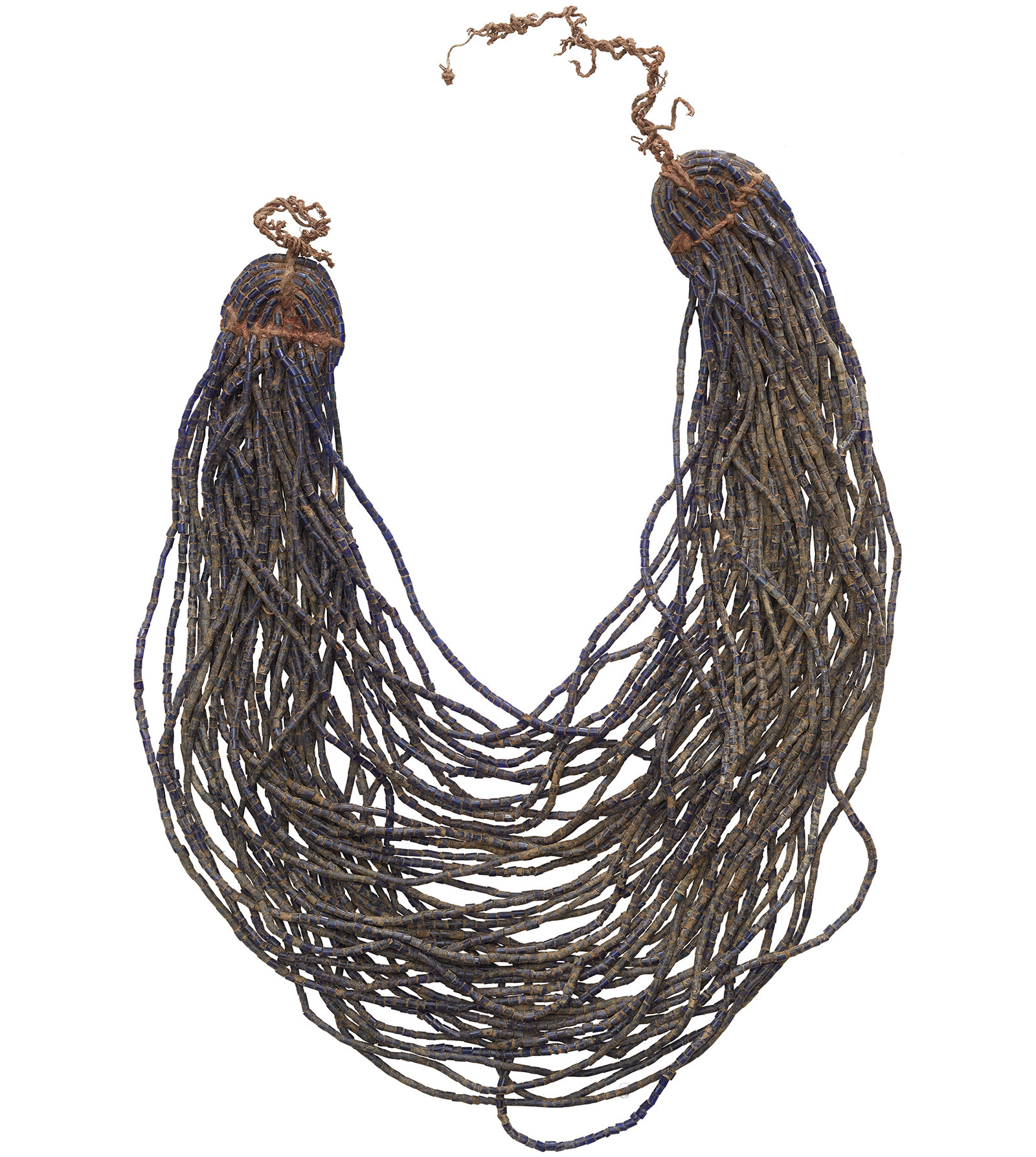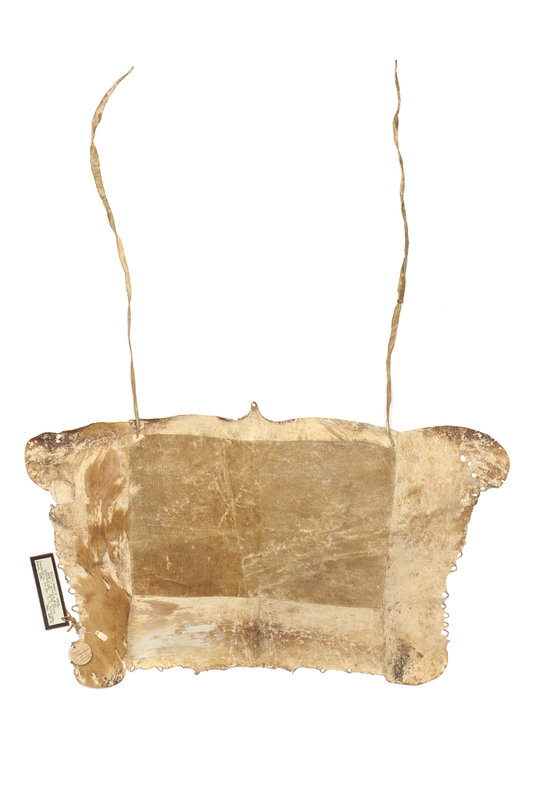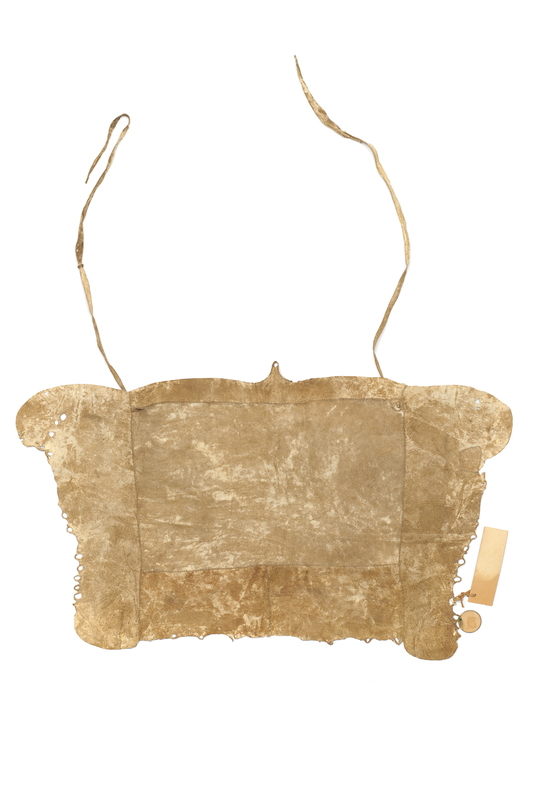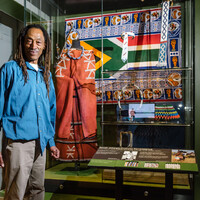Back Apron; Back Skirt; Skin; Mothikga
Item
Title
Back Apron; Back Skirt; Skin; Mothikga
Creator
Unrecorded
Description
Physical Description: Women's antelope skin apron; waist to knee length. There is a central square panel with four edges of curved skins. Two hide skin ties at the top edge. Some fur present on inside. [Royal Pavilion & Museums]
Contextual Description: SL 06:53
This is like a goatskin if I remember the interesting thing is ...This was kind of...finished in a different fashion and here they left the, the hairs on as some form of decoration. And then again it would maybe indicate the status of the person who owned it or maybe their age. This one is more simple.
SL 07:58
[the straps are] for tying the skirt around your waist and again they still left these things...
NS 08:06
the holes on the pegs
WT 08:11
but it's this from Basarwa
SL 08:13
no
WT 08:13
[there] was also stuff from Bakalanga which I couldn't even recognise
SL 08:18
...before the Calico cloths spread wide Bangwato and many other Tswana tribes in southern Africa were using leather. Again, this is the same thing back apron, back skirt [KL transcript of interview MAC_BB_20190805_NS1]
This is like a goatskin if I remember the interesting thing is ...This was kind of...finished in a different fashion and here they left the, the hairs on as some form of decoration. And then again it would maybe indicate the status of the person who owned it or maybe their age. This one is more simple.
SL 07:58
[the straps are] for tying the skirt around your waist and again they still left these things...
NS 08:06
the holes on the pegs
WT 08:11
but it's this from Basarwa
SL 08:13
no
WT 08:13
[there] was also stuff from Bakalanga which I couldn't even recognise
SL 08:18
...before the Calico cloths spread wide Bangwato and many other Tswana tribes in southern Africa were using leather. Again, this is the same thing back apron, back skirt [KL transcript of interview MAC_BB_20190805_NS1]
Contextual description: Could describe as front apron or skirt. Mothikga is the name for a garment that can be worn wrapped in different ways on the body. [Tshepo Skwambane, 2020]
Publisher
Making African Connections
Date
Pre 1899
Type
PhysicalObject
Format
Whole: 420 mm x 760 mm
Animal skin; Hide; Antelope
Identifier
R4007/4
Source
Collected by Reverend William Charles Willoughby, a Christian missionary, in what was then the Bechuanaland Protectorate (1885-1966). It is now the Republic of Botswana, having gained independence from Britain in 1966.
From 1889-92 Willoughby was pastor at Union Street Church, Brighton (now The Font pub). From 1893 to 1898 he worked for the London Missionary Society in Bechuanaland. He assembled this collection of objects during this period. This was a period of social and technological changes and these objects represent traditional lifestyles and skills, rather than the contemporary lives of the people Willoughby met.
Willoughby's collection was loaned to Brighton Museum in 1899 when he returned to the UK. The loan was converted into a donation in 1936, and accessioned as acquisition R4007.
Some objects were re-numbered with the WA (World Art) numbering system in the 2000s. These numbers have been reverted to the original R4007/... numbers where possible for consistency in 2019.
From 1889-92 Willoughby was pastor at Union Street Church, Brighton (now The Font pub). From 1893 to 1898 he worked for the London Missionary Society in Bechuanaland. He assembled this collection of objects during this period. This was a period of social and technological changes and these objects represent traditional lifestyles and skills, rather than the contemporary lives of the people Willoughby met.
Willoughby's collection was loaned to Brighton Museum in 1899 when he returned to the UK. The loan was converted into a donation in 1936, and accessioned as acquisition R4007.
Some objects were re-numbered with the WA (World Art) numbering system in the 2000s. These numbers have been reverted to the original R4007/... numbers where possible for consistency in 2019.
William Charles Willoughby
Botswana, Southern Africa, Africa
1893-1898
Space/Place
Botswana, Southern Africa, Africa
Cultural Group: Tswana
Rights
Creative Commons Attribution-ShareAlike 4.0 International
Item sets
Linked resources
Filter by property
| Title | Alternate label | Class |
|---|---|---|
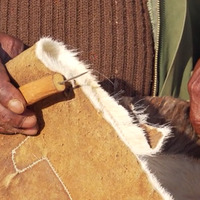 Leatherwork Leatherwork |

